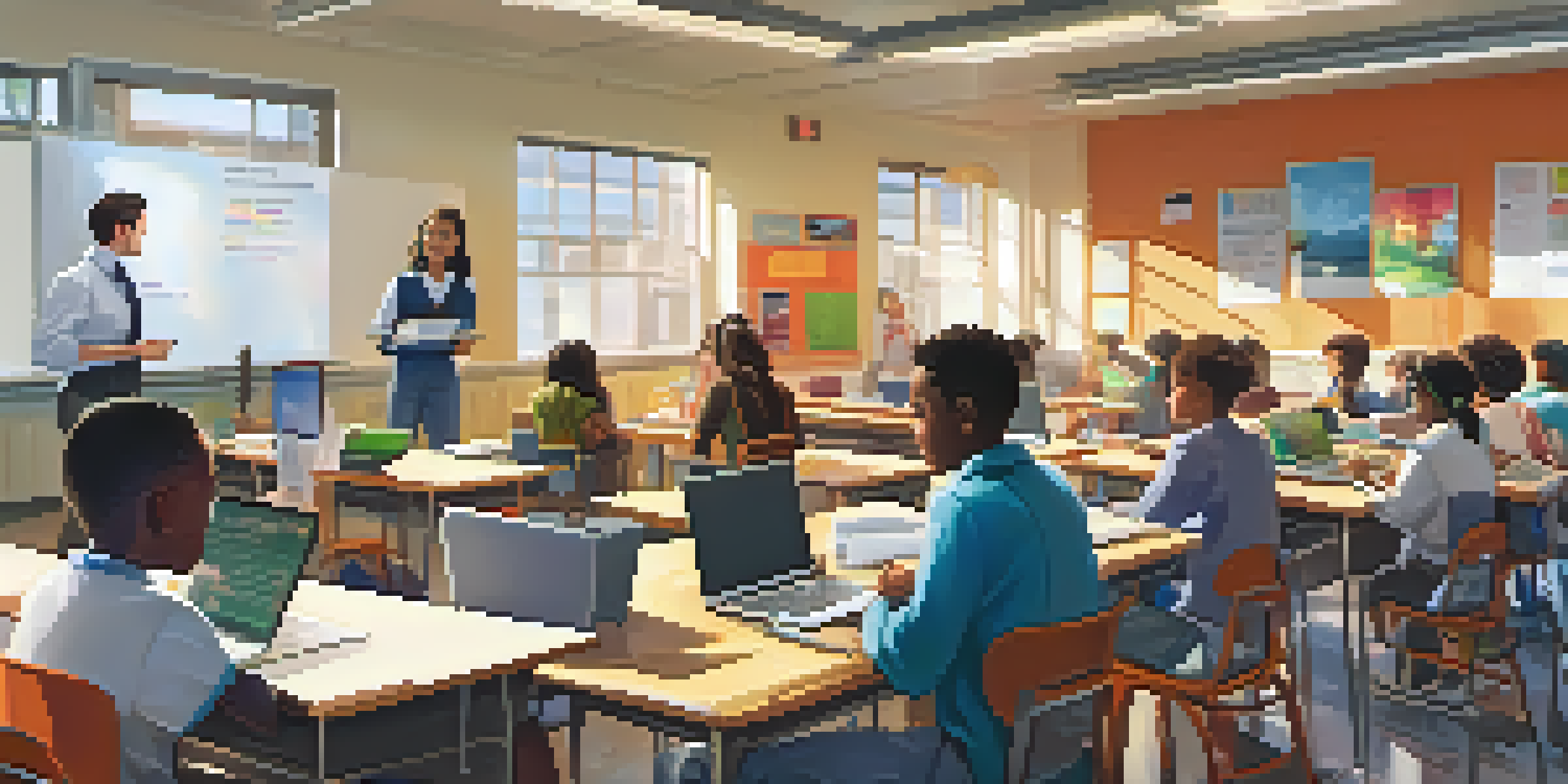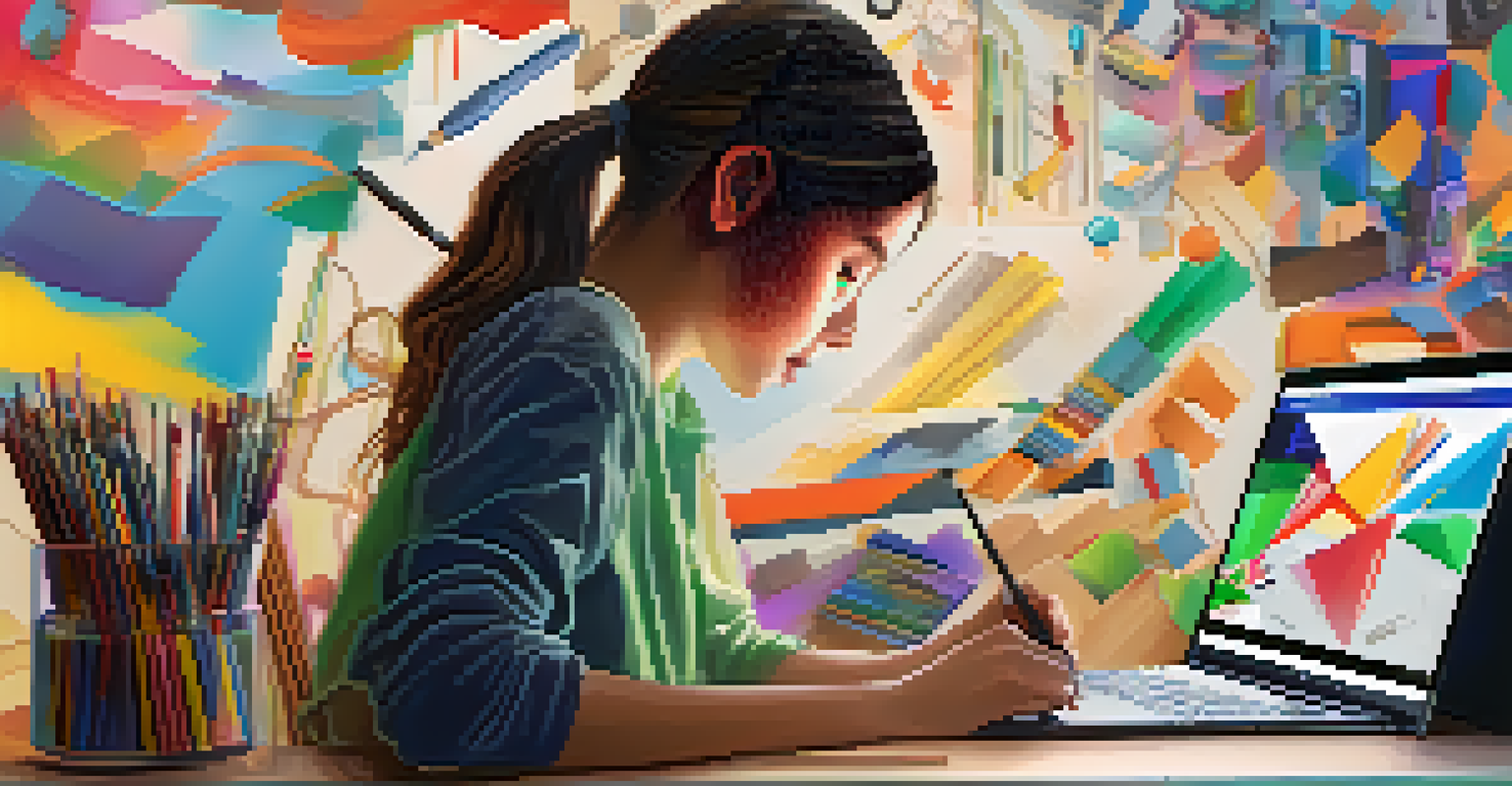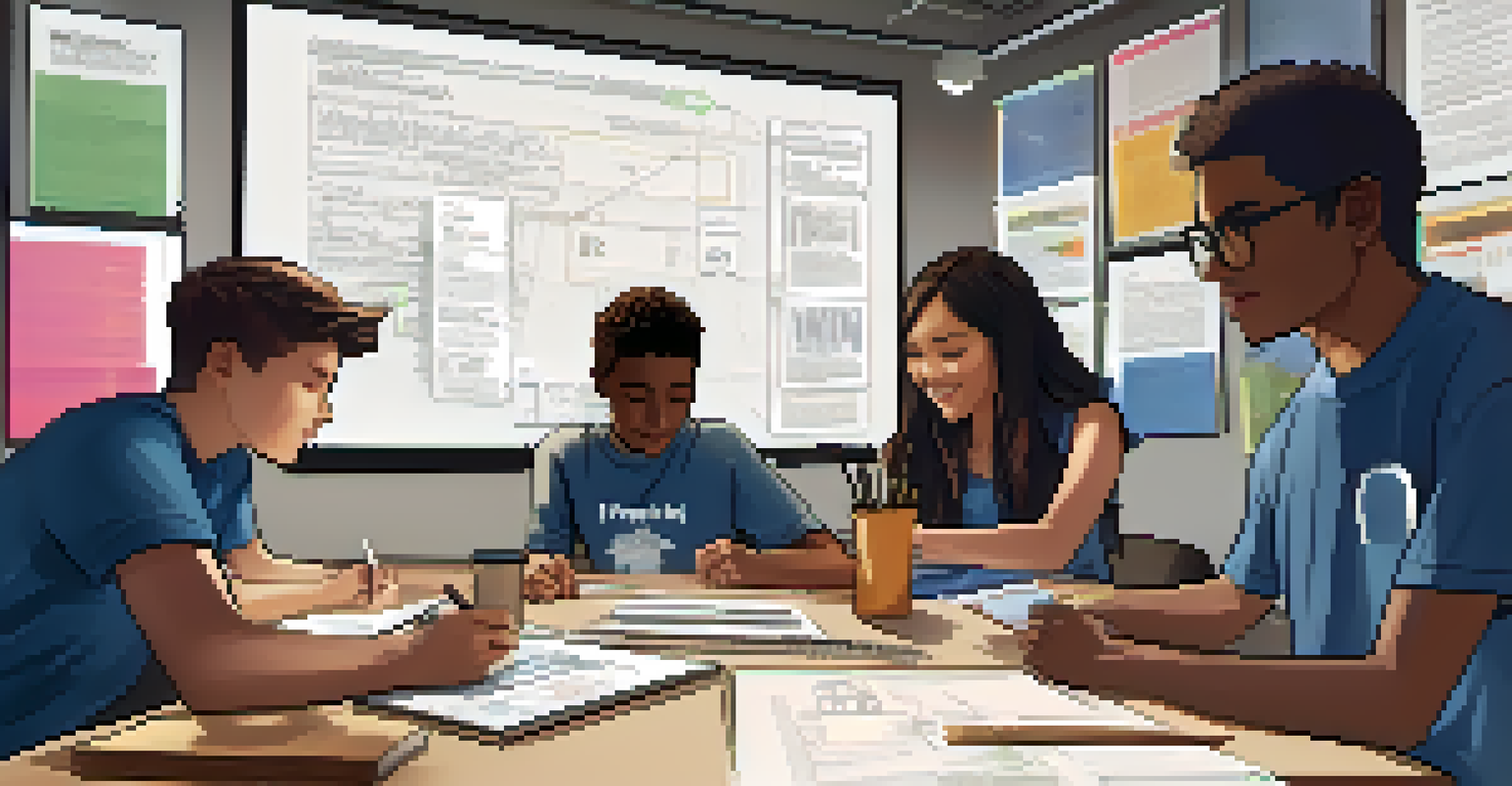The Impact of Blended Learning on Critical Skills Development

Understanding Blended Learning and Its Components
Blended learning combines traditional face-to-face instruction with online learning experiences. This method provides flexibility, allowing students to learn at their own pace while still receiving guidance from educators. By integrating technology, blended learning creates a more dynamic and engaging educational environment that caters to diverse learning styles.
Education is not the filling of a pail, but the lighting of a fire.
Imagine a classroom where students can watch lectures online, participate in interactive activities, and collaborate on projects with peers, all while having the support of their teachers. This hybrid approach not only enhances engagement but also promotes a deeper understanding of the material. As students navigate both in-person and digital platforms, they develop essential skills that are crucial for the modern workforce.
Ultimately, blended learning is about leveraging the best of both worlds – traditional and digital. This combination can lead to improved learning outcomes and better prepare students for the complexities of today's job market.
Critical Skills: What Are They and Why Matter
Critical skills encompass a range of competencies, including problem-solving, creativity, communication, and collaboration. These skills are essential for success in both academic settings and the workplace, as they enable individuals to navigate challenges effectively. As the landscape of education and employment evolves, the demand for these skills continues to grow.

Think of critical skills as the toolkit that helps individuals tackle real-world problems. For example, effective communication can lead to better teamwork, while creativity can foster innovative solutions. By focusing on these skills, educators can ensure that students are not just memorizing facts, but are also equipped to think critically and adapt to changing circumstances.
Blended Learning Enhances Engagement
By combining traditional and digital methods, blended learning creates a more dynamic educational experience that supports diverse learning styles.
Incorporating critical skills into the curriculum is vital for preparing students for future challenges. As we explore the impact of blended learning, it becomes clear that this approach plays a significant role in developing these competencies.
How Blended Learning Enhances Problem-Solving Skills
One of the standout benefits of blended learning is its ability to enhance problem-solving skills. Through scenario-based learning activities and real-world case studies, students can engage with complex problems that require critical thinking. This hands-on approach encourages learners to analyze situations and devise effective solutions.
The future belongs to those who believe in the beauty of their dreams.
For instance, a blended learning course might present students with a business dilemma, asking them to work in teams to propose solutions. This collaborative effort not only sharpens their problem-solving abilities but also fosters teamwork and communication skills. As students wrestle with challenges, they learn to evaluate various solutions and understand the consequences of their decisions.
Moreover, by providing access to online resources, blended learning allows students to research and utilize diverse information when tackling problems. This resourcefulness is a key aspect of effective problem-solving, making blended learning a powerful tool for developing this critical skill.
Cultivating Creativity Through Blended Learning Methods
Blended learning fosters creativity by allowing students to explore subjects in innovative ways. When students can access various digital tools and resources, they are more likely to engage in creative thinking. By blending traditional teaching methods with technology, educators create an environment that encourages experimentation and original thought.
Imagine students using digital platforms to create multimedia presentations or produce podcasts about their coursework. Such projects not only stimulate creativity but also allow learners to express their understanding in unique formats. This freedom to experiment helps students discover their creative potential and develop a passion for learning.
Critical Skills for Future Success
Blended learning fosters essential competencies like problem-solving, creativity, and collaboration, which are crucial for navigating modern challenges.
Ultimately, blended learning empowers students to think outside the box and approach problems with fresh perspectives. By nurturing creativity, educators can prepare students for a future where innovation is key to success.
Building Communication Skills in a Blended Environment
Effective communication is a cornerstone of both academic and professional success, and blended learning provides ample opportunities to cultivate this skill. Through group projects, online discussions, and presentations, students are encouraged to articulate their thoughts clearly and collaborate with others. This multifaceted approach enhances both verbal and written communication skills.
Consider how online forums allow students to engage with peers from different backgrounds and cultures. This exposure not only broadens their perspectives but also challenges them to communicate in diverse ways. As students learn to convey their ideas effectively, they become more confident in their communication abilities.
Moreover, the feedback received in blended learning environments helps students refine their communication styles. By receiving constructive criticism from peers and instructors, they can continuously improve and adapt, which is essential in today’s interconnected world.
Improving Collaboration Skills Through Blended Learning
Collaboration is another vital skill that benefits significantly from blended learning. By participating in group projects and discussions, students learn to work effectively with others, share ideas, and resolve conflicts. This collaborative environment mirrors real-world situations where teamwork is crucial for success.
For example, blended learning often involves online collaboration tools that allow students to work together, even from different locations. This flexibility not only facilitates teamwork but also teaches students how to manage virtual communication and navigate diverse perspectives. As they collaborate, they develop interpersonal skills and build a sense of community.
Technology Bridges Learning Gaps
The integration of technology in blended learning enhances skill development and prepares students for the tech-driven workplace.
Ultimately, blended learning prepares students for the collaborative nature of the modern workplace. By honing these skills in a supportive environment, learners are better equipped to succeed in their future careers.
The Role of Technology in Skill Development
Technology plays a pivotal role in blended learning, serving as a bridge between traditional and modern educational practices. By incorporating various digital tools, educators can create engaging and interactive experiences that enhance skill development. This technological integration not only captures students' interest but also facilitates deeper learning.
Imagine using virtual simulations to practice real-world scenarios in a safe environment. Such technology allows students to apply their knowledge and skills in practical situations, reinforcing their learning. Additionally, access to online resources enables learners to explore topics in depth and pursue their interests beyond the classroom.

As students become proficient in using technology, they also develop important digital literacy skills. In today's tech-driven world, these skills are essential for navigating professional environments and staying competitive.
Conclusion: The Future of Blended Learning and Skills Development
In conclusion, blended learning has a profound impact on critical skills development, preparing students for the challenges of the future. By combining traditional and digital learning experiences, educators can foster essential skills such as problem-solving, creativity, communication, and collaboration. This holistic approach not only enhances student engagement but also equips them with the competencies needed in today’s workforce.
As we look ahead, the importance of blended learning will only continue to grow. Educational institutions must adapt to the changing landscape by embracing innovative teaching methods that prioritize skill development. By doing so, they can ensure that students are well-prepared for the demands of an ever-evolving job market.
Ultimately, the integration of blended learning into education is a step towards a more adaptable and skilled generation. As students harness these critical skills, they will be better positioned to succeed in their personal and professional lives.